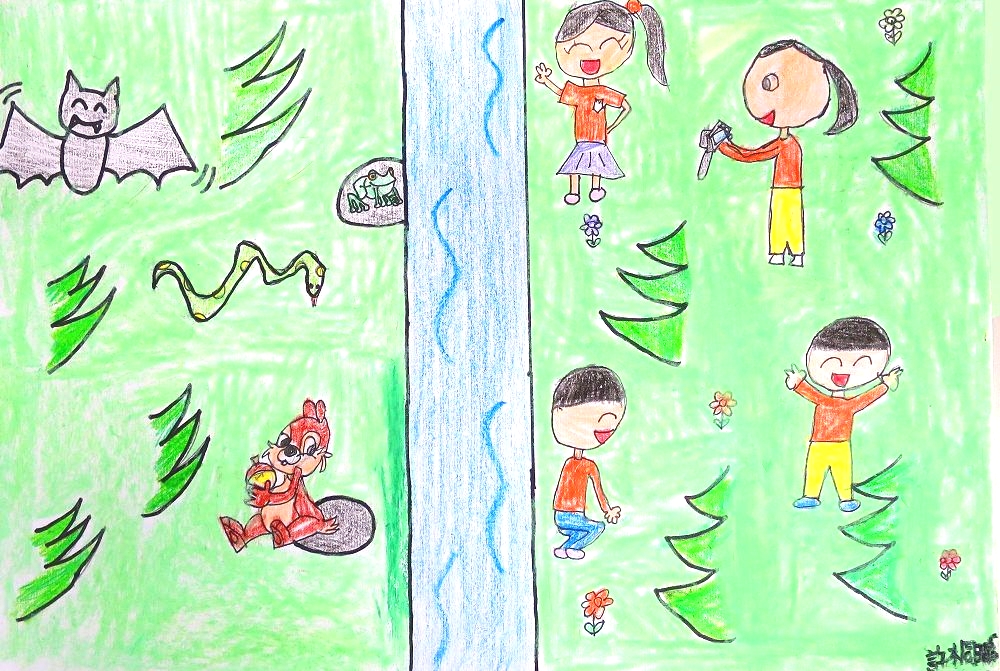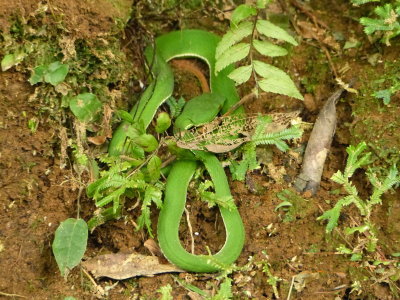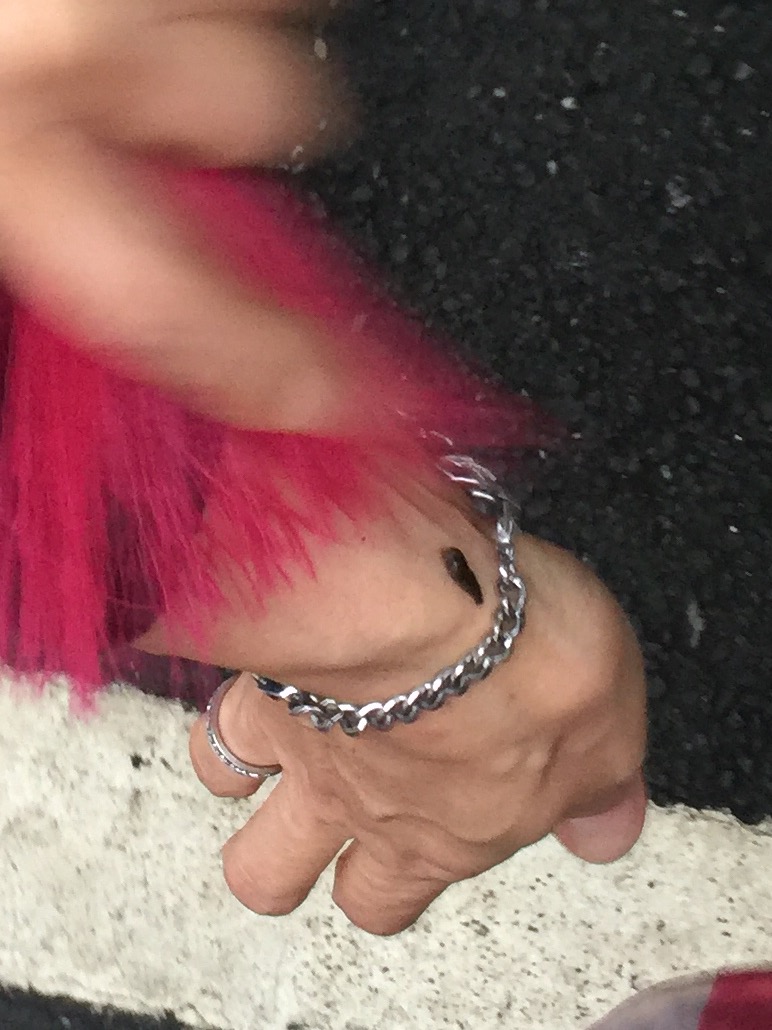|

|


We visited Pingding Ancient Channel after Typhoon
Soudelor and Typhoon Dujuan hitting at the end of August and September.
Particularly Typhoon Dujuan at the end of September seriously damaged
many existing animal ecology in Ancient Channel. A large number of
Swinhoe's frog, Giant Spiketail in Taiwan, Elegant Five-lined Skink,
Taiwan bamboo viper, Formosan lesser horseshoe bat, and lovely scarab,
and stag beetle generic, active around the Ancient Channel, have died or
migrated due to the strong wind and torrential rain. By the time we
surveyed Pingding New/Ancient Channel and Dengfong Channel on October 21st
and October 28, we did not see the active traces of these animals. Not
even the common bats and water snake at Pingding New Channel Tunnel. It
was a real pity.
In general, the ecology of channel consists of small
animals such as pangolin, civet, belly-banded squirrel, and bats. Common
birds include Taiwan whistling thrush, Muller’s Barbet, black drongo,
Taiwan blue magpie, bamboo partridge, Japanese white-eye, and Chinese
Bulbul. Types of insects include the dragonfly nymph living, firefly
larvae, waterscorpions, and other aquatic insects. Even creek shrimps
and other shell animals hiding in the apertures of rocks, as well as the
amphibians such as frogs, tree frogs, toads, and snakes can all be found
around the channel.
|
 |
There is abundance of amphibians and reptiles near
the channel. This area is particularly busy at night mainly because
the plantation on the sides of the channel is fully shielded and the
weather is stable. In view of the quantity discovered, Taiwan bamboo
viper, pointed-scaled Pitviper and cobra are found with the most
quantity. Avirulence snakes commonly consist of green snake,
red-banded snake, Big-eyed rat snake, and White stomach snake.
Taiwan bamboo snakes are frequently found in spiral position and
hiding in dark and humid caves for shade during the day.(b)
|
|
 |
Open your eyes along
the channel and it is easy to spot traces of frogs. However the
most special frog is the Swinhoe’s frog with the sounds similar
to bird chirping. Its voice is short and similar to “chirp” and
people often mistake it as bird. It is really a frog.
The group of Swinhoe's
frog is the one in channel with most quantity. Particularly in
summer midnight, it is frequent that a female frog would stay on the
side of channel, surrounded by 4 to 5 male frogs. They like to hide
in rock apertures with water in daytime and people usually could
hear the sound without identifying their position. They are one of
the mysterious guests in channel. Their food consists of insects,
while the nymph and firefly larvae are one of their food options.
Their primary predators are snakes and large birds of prey. The
large number of frogs living around the channel are not only the key
indicator of environment and ecology but also the main source of
vital food for other species and life.(b) |
|
 |
The most representative mammals near the channel
are the bats. In the past, it was easy to spot bats at the
Qinfong Pavilion at the channel entrance. Excrements were often
seen on the table of the pavilion. The excrements of bats are
excellent ingredients for Chinese medicine where some people
came here early in the morning to pick up the excrement. Another
good place for finding traces of bats is the cave of Ancient
Channel. However the entrance of the tunnel is now locked mainly
to prevent tourists from vandalizing the ecology inside and for
the convenience of management.(b) |
|
 |
The most number of active mammals in the channel are
belly-banded squirrel. It is easy to spot their naughty figures
around the Channel, who would swing in forests. However they are
quite shy and by the time you are prepared to station and observe
them well, they would have disappeared instantly. |
|
 |
Although Pingding Ancient Channel underwent the hit by
Typhoon Soudelor and Typhoon Dujuan while many previously active animals
all disappeared, we were fortunate to meet a beautiful damselfly, which
royal blue wings and green body were so pretty and charming.
Damselfly is a carnivorous insect with bright colors,
which compound eyes are developed on the two sides of the head with
similar front and rear wings. Its wings come with pteropoda and it
belongs to the same odonatan as dragonfly. The difference between
dragonfly and damselfly is that the wings of damselfly are stretched
out and overlap during a rest. The body of damselfly is mostly
smaller than dragonfly with the smaller body length of damselfly in
1.5cm and the largest one reaching 6~7cm. |
|
 |
In the second channel survey, the most astonishing
animal for us was leech. When we were playing water at the origin of
Dengfong Channel, we felt the refreshing coldness of river water and
experienced the walk on New Channel tunnel where bats could appear.
Unknowingly, the terrible leech has quietly sucked on to our feet
and pants.
After we returned home from the first survey of New
and Ancient Channels, Teacher Wen-Ning and classmates Yunzhen and
Kaiteng discovered leech on their feet. When we interviewed
Commissioner Zhou at the pavilion next to the Pingdeng Village
Police Station, Teacher Ya-chun discovered leech on her wrist and
she could not get rid of it since it was sucking too tight. We could
only remove the leech after we took the plastic brush. We still talk
about the scene of Teacher Ya-Chun screaming with much fun. |
|



